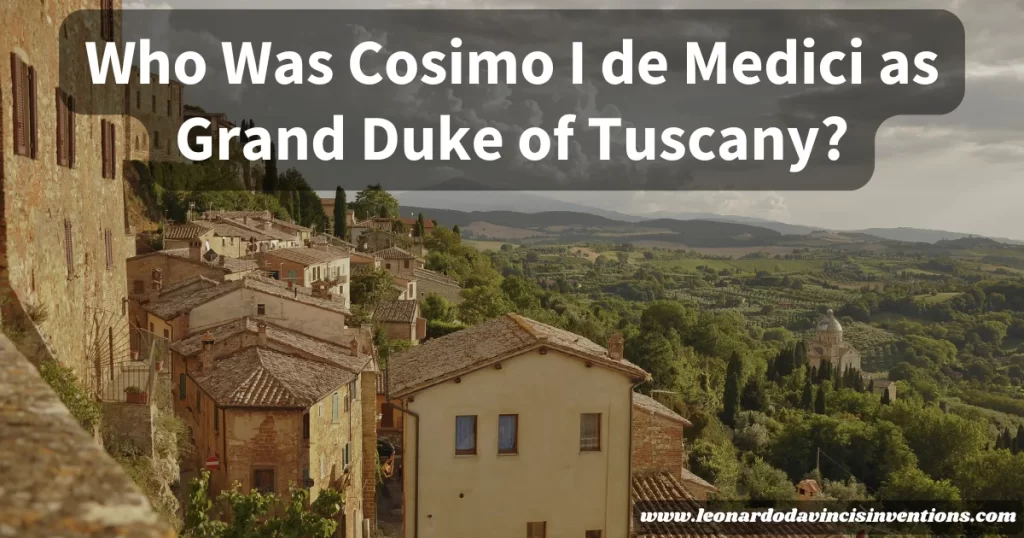
Cosimo I de Medici as Grand Duke of Tuscany, stands out in Italian history, but many people are unsure of his true significance.
The powerful Medici family played a major role in Europe, and this post explains who Cosimo I was, highlighting key facts about his rise to power and his impact on Florence and Tuscany.
Cosimo I de Medici was the second duke of Florence and became the first Grand Duke of Tuscany.
He ruled from 1537 to 1574, transforming Florence into one of Europe’s most respected courts.
His actions shaped Tuscany’s government, art, and culture. Today, his rule remains vital in understanding the region’s history.
If you are interested in history, politics, or art, learning about Cosimo I offers insight into the roots of modern Tuscany.
The Rise of Cosimo I de’ Medici, Grand Duke of Tuscany
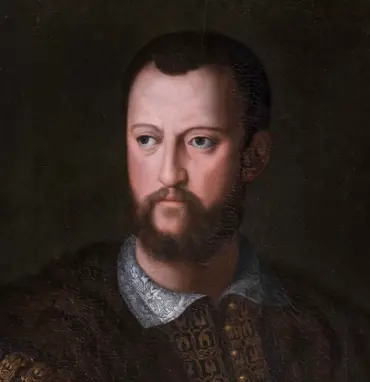
Cosimo I de’ Medici, Grand Duke of Tuscany, became a key figure in Renaissance Italy. His rise to power involved family intrigue, political conflict, and significant changes in the governance of Florence and Tuscany.
Early Life and Medici Family Background in Florence
Cosimo I de’ Medici was born in 1519 in Florence. He belonged to the Medici family, a powerful banking family known for shaping Italian Renaissance politics.
Although not from the senior line, Cosimo was a descendant of Lorenzo de’ Medici. This connection gave him significant ties to Florentine history and culture.
His father, Giovanni dalle Bande Nere, earned respect as a soldier. Cosimo spent much of his childhood at Castello near Florence, where he learned about administration and military leadership from his family.
The Medici heritage gave Cosimo both resources and legitimacy among the Italian nobility. Through their banking success, the Medici family controlled Florence, especially after the fall of the Florentine Republic.
Connections to art, architecture, and diplomacy enriched Cosimo’s early life with Renaissance culture.
The Assassination of Alessandro de’ Medici and the Succession Crisis
In 1537, Alessandro de’ Medici, the first Duke of Florence, was assassinated by a cousin. This event left a power vacuum in Florence and sparked debate over succession and the future of Medici rule.
The main Medici branch lacked direct male heirs. Florence’s leading families and outside powers had to choose a successor.
At just 17, Cosimo became a surprise candidate. Many viewed him as inexperienced and easily controlled, but his Medici lineage and connections persuaded key political players to support his claim.
After Alessandro’s assassination, Florence stood at a crossroads. The city’s influential leaders hoped Cosimo would maintain stability without disrupting the balance of political power.
His selection surprised many but showed a strong desire for continued Medici rule and the dynasty’s survival.
Cosimo’s Coronation as Duke of Florence and Political Power
Cosimo’s coronation as Duke of Florence followed Alessandro’s assassination. He accepted the role with careful diplomacy, aiming to assert authority while avoiding resistance from rival families and foreign officials.
Supporters declared him Duke on July 6, 1537. Cosimo I de’ Medici quickly moved to consolidate power and restore order in Florence.
Early in his reign, Cosimo faced opposition from republican exiles and war with Siena. He relied on military campaigns and alliances, including support from the Holy Roman Emperor Charles V.
Cosimo’s rule focused on strengthening Medici authority and laying the groundwork for broader ambitions in Tuscany.
Consolidation of Power and Governance in 16th-Century Tuscany
As Duke, Cosimo strengthened political power by reorganizing Florence’s government. He reduced the influence of opposing families and centralized control under his administration.
Cosimo introduced legal reforms, improved tax collection, and built a standing army to maintain order. He extended his rule over more of Tuscany, eventually capturing Siena after a protracted conflict.
By integrating Siena into his territory, Cosimo set the foundation for the unification of Tuscany. He supported the arts, funded public architecture, and grew the Medici court as a center for Renaissance culture.
As highlighted in Britannica’s detailed account, Cosimo greatly expanded and stabilized the region under Medici leadership through skilled statecraft and diplomacy.
Establishing the Medici Dynasty and Nobility Titles
In 1569, Pope Pius V awarded Cosimo I de’ Medici the title Grand Duke of Tuscany. This new title recognized the Medici dynasty’s expanded reach and elevated his family’s status among European royalty.
The creation of the Grand Duchy gave Cosimo and his heirs hereditary rule over nearly all of Tuscany. He created new noble titles and integrated Florentine and Sienese elites into the Medici administration.
Cosimo’s leadership helped establish patterns for succession and governance that endured for generations in the Italian nobility. His achievements included building the Uffizi, strengthening the Medici palaces, and supporting art patronage in Florence.
His actions left a permanent mark on the history and legacy of the Medici family, tying Florence’s golden age to the achievements of the Medici court.
Governance and Expansion under Cosimo I de’ Medici, Grand Duke of Tuscany
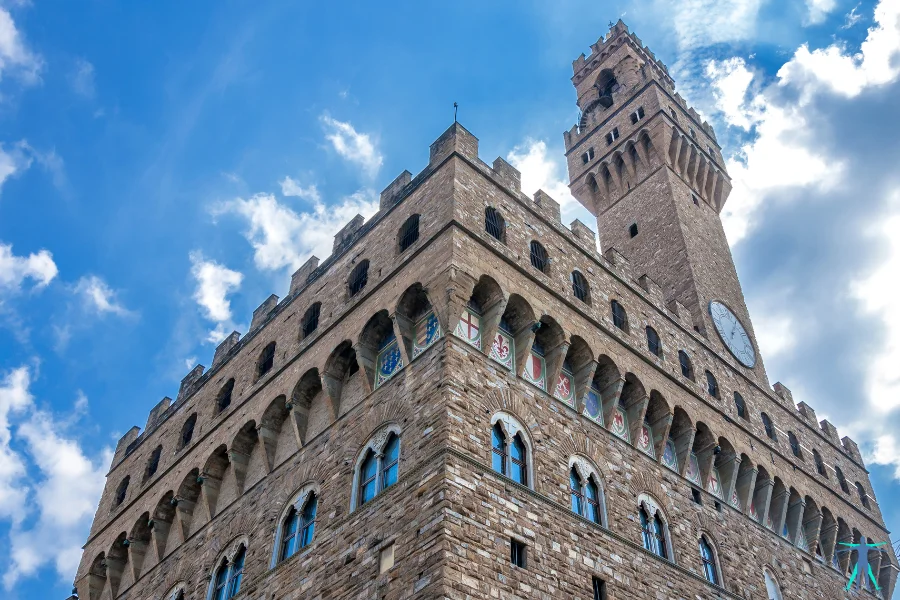
Cosimo I de’ Medici, Grand Duke of Tuscany, changed the political, military, economic, and cultural landscape of Renaissance Tuscany through reforms, strategic expansion, and careful administration. His reign influenced both the Medici dynasty and the broader history of Florence in the 16th century.
Cosimo’s Rule: Political Reforms and Statecraft
Cosimo’s leadership began after the assassination of Alessandro de’ Medici. He quickly consolidated power, reshaping the government’s structure and reducing the influence of rival families.
Cosimo reorganized the government, giving himself more direct control while limiting the power of councils and powerful nobles. He established a group of loyal advisors and restructured the city’s magistracies, ensuring that decision-making rested in the hands of the Medici.
By centralizing authority, Cosimo weakened aristocratic opposition. He strengthened laws around property, taxation, and trade.
This new governance structure made the state more stable and efficient, helping Florence recover from past instability. Cosimo’s efforts showed a blend of strict control and careful planning, earning him respect and criticism. See more about his political reforms and rule.
Military Campaigns and the Expansion of Tuscany’s Borders
Through military campaigns, Cosimo I de’ Medici increased Tuscany’s size and strength. He led successful wars against Pisa and Siena, two important city-states in central Italy.
The defeat of Siena was a turning point, as it brought much of southern Tuscany under his control. His strategy involved alliances with major powers such as Spain and the Holy Roman Empire.
Using military force and diplomatic negotiations, Cosimo expanded the Medici dynasty’s reach across the region. Incorporating new lands created a united territory for the new Grand Duchy of Tuscany.
Cosimo’s military efforts demonstrated his ambition and skill in navigating Italian Renaissance politics. His victories made Florence a leading power in Italy’s network of city-states.
Administration and Diplomacy in the Medici Court
Cosimo I understood that effective administration and diplomacy were essential to maintain control over a growing domain. He established a centralized bureaucracy that oversaw taxes, justice, and public works under his supervision.
Officials in the Medici court followed strict orders and reported directly to Cosimo or his most trusted advisors. He relied on skilled diplomats to manage relations with powerful neighbors, such as Spain and the papacy.
Cosimo tied the Medici family to other principal Italian nobility through marriage alliances, further strengthening his position. By building administrative centers, including the Palazzo Vecchio, Cosimo showed his commitment to a stable government.
His court became a center of culture, attracting artists, architects, and scholars, which boosted Florence’s prestige.
Economic Development and Banking Family Influence
The Medici family’s history as a banking family provided Cosimo I with resources and connections. To improve trade, he invested in infrastructure projects, including roads and ports.
These projects created jobs and made Florence a significant player in regional commerce. Cosimo established protection for local industries, particularly silk and wool production, which were crucial to the Florentine economy.
Improved financial administration allowed the state to collect taxes more efficiently, supporting war efforts and cultural projects. Through careful management and investment, Cosimo increased the wealth of his dynasty and the city.
His support for banking and business reinforced Florence’s reputation as a leading economic center during the Italian Renaissance.
Tuscany’s Unification and the Creation of the Grand Duchy
One of Cosimo’s most significant achievements was the unification of Tuscany under the Medici dynasty. After securing Florence and gaining control of Siena, he formed a single political entity.
In 1569, the pope gave him the title of Grand Duke of Tuscany, recognizing his rule over the entire region. This new title made Cosimo the first to hold such a rank in Tuscany’s history.
The Grand Duchy brought increased stability, allowing for further advancements in art, science, and architecture. Cosimo’s coronation marked a new era, connecting Medici governance to the broader European world of nobility titles and formal states.
His legacy shaped Tuscany’s identity for centuries and solidified the Medici heritage in Florentine history.
Cultural Legacy and Achievements of Cosimo I de’ Medici, Grand Duke of Tuscany
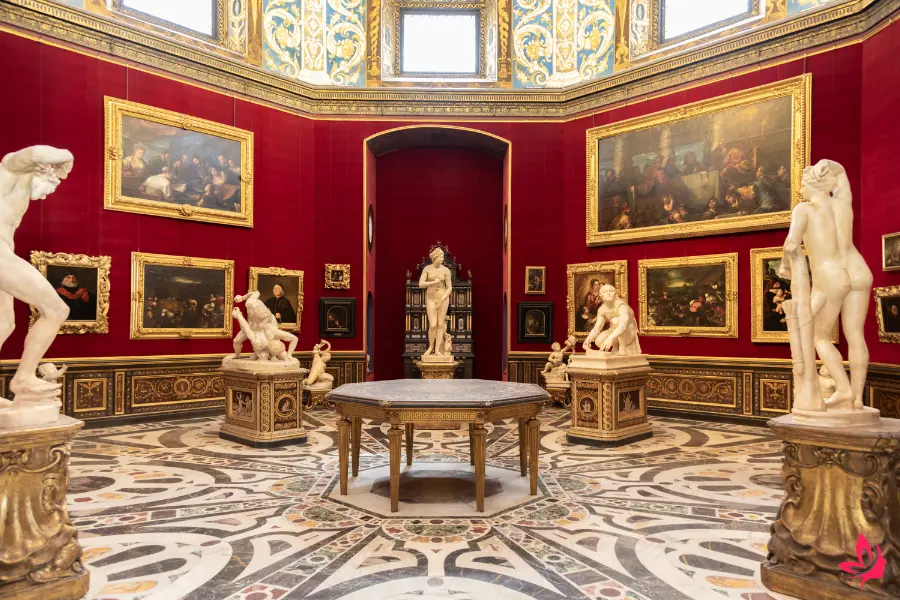
Cosimo I de’ Medici, Grand Duke of Tuscany, transformed Florence and the broader region through his leadership and artistic support. His impact shaped politics, art, and architecture during the 16th century, leaving a mark that defined the Medici dynasty and the Italian Renaissance.
Patron of the Arts and Renaissance Culture in Florence
Cosimo I was a strong patron of the arts. He played a crucial role in making Florence a center of Renaissance culture.
He understood that art could convey power and reflect the city’s cultural significance.
He supported artists like Giorgio Vasari, Benvenuto Cellini, and Agnolo Bronzino. Vasari created many works for Cosimo and worked as a court architect.
The Medici court attracted musicians, writers, and scientists. It became a hub for culture and learning.
Cosimo’s dedication to art promoted humanism and encouraged talented people to settle in Florence. These efforts enriched the city.
Architectural Projects and the Medici Palace
Cosimo I de’ Medici led ambitious building projects that changed Florence’s appearance. He commissioned the Uffizi, which initially served as offices for Florentine magistrates and later evolved into a world-renowned art museum.
The Duke expanded the Medici palace, creating new gardens and halls. He hired top architects and engineers to design and build the city’s robust fortifications and defensive walls.
Other significant projects included the Pitti Palace and the Boboli Gardens. These sites remain central to Florence’s identity and are key examples of Renaissance architecture.
Cosimo’s Achievements in Florentine History and Italian Renaissance Politics
Cosimo unified and strengthened Tuscany’s political structure. After the assassination of Alessandro de’ Medici, Cosimo became Duke of Florence and later the first Grand Duke of Tuscany in 1569.
He reduced the influence of rival families and increased the authority of the Medici lineage. Cosimo reorganized the government administration, introduced reforms, and enhanced the legal system to foster stronger governance.
His political strategies and military campaigns expanded Tuscan territory, including the capture of Siena. These achievements made Florence more stable and robust.
Cultural Influence and Art Patronage Across Tuscany
Cosimo I’s art patronage and cultural influence expanded beyond Florence into Tuscany. He encouraged building projects, such as city halls and churches, in towns like Pisa and Livorno.
As Grand Duke, he promoted education, supported the establishment of botanical gardens, and contributed to the founding of scientific institutions.
He welcomed scholars and artists from across Italy and Europe, strengthening Tuscany’s ties with other Renaissance courts.
Cosimo founded manufactories and supported technical education. These actions spurred economic development in many Tuscan cities.
The Lasting Legacy of Cosimo’s Leadership and Medici Heritage
Cosimo I’s leadership defined the Medici dynasty in the 16th century. The unification of Tuscany under a single rule marked a significant chapter in the region’s history.
The Medici family’s commitment to art, architecture, and learning provided a cultural legacy that continues to attract people to Florence and beyond.
The Medici heritage endures through museums, monuments, and traditions associated with Cosimo’s rule.
Frequently Asked Questions
Cosimo I de’ Medici was a prominent political and cultural leader who ruled Florence and Tuscany during the 16th century. With his power and influence, he and his family shaped the region’s art, politics, and economy for generations.
Does the Medici family still exist today?
The main branch of the Medici family ended in the 18th century. Some people claim descent from distant branches today but do not hold political power.
The Medici name remains famous for its rich history in Florence.
What happened to Cosimo I de’ Medici?
Cosimo I de Medici became the Duke of Florence in 1537 and the first Grand Duke of Tuscany in 1569. He ruled until he died in 1574.
He expanded the Medici’s power and was known for reforms and patronage of the arts.
Who inherited Medici’s wealth?
After his death, Cosimo I de Medici’s sons inherited his power and wealth. The Medici estate was passed down through several generations until the family’s ruling line came to an end.
What is Cosimo I de Medici best known for?
Cosimo I de’ Medici is mainly remembered for becoming the first Grand Duke of Tuscany and for strengthening the Medici rule. He promoted the arts, built impressive buildings, and brought stability to the city of Florence.
His legacy can be traced through Florence’s many Renaissance landmarks.
What was the dark side of the Medici family?
Like many powerful families, the Medici were involved in political schemes, rivalries, and violence. This included the use of assassinations and firm control over their rivals.
Some members faced accusations of cruelty or corruption during their rise to power.
How did the Medicis lose their money?
The Medici family’s wealth began to decline with the collapse of their banks and their continued spending. Poor investments, debt, and less profitable business ventures also weakened their financial power over time.
How much were the Medicis worth today?
It isn’t easy to calculate an exact amount, but the Medici family’s fortune would be worth billions in today’s money. They were among the wealthiest families in Europe during Cosimo I’s era.
Who was the most powerful family in Italy?
During Cosimo I de Medici’s rule, the Medici family was one of the most powerful in Italy. As the Grand Dukes of Tuscany, they controlled Florence and then all of Tuscany.
Other notable families included the Sforza of Milan and the Borgia of Rome.
Why did the Medici family fall?
The Medici dynasty fell due to financial decline, a lack of male heirs, and changing European political tides. As power shifted, other families and nations emerged as dominant.
Who was the wealthiest family in Florence, Italy?
In Cosimo I’s time, the Medici were the wealthiest family in Florence.
They gained their wealth from banking and trade.
Later, their rule over the region increased their fortune.
Florence’s history is closely linked to the Medici family’s leadership.
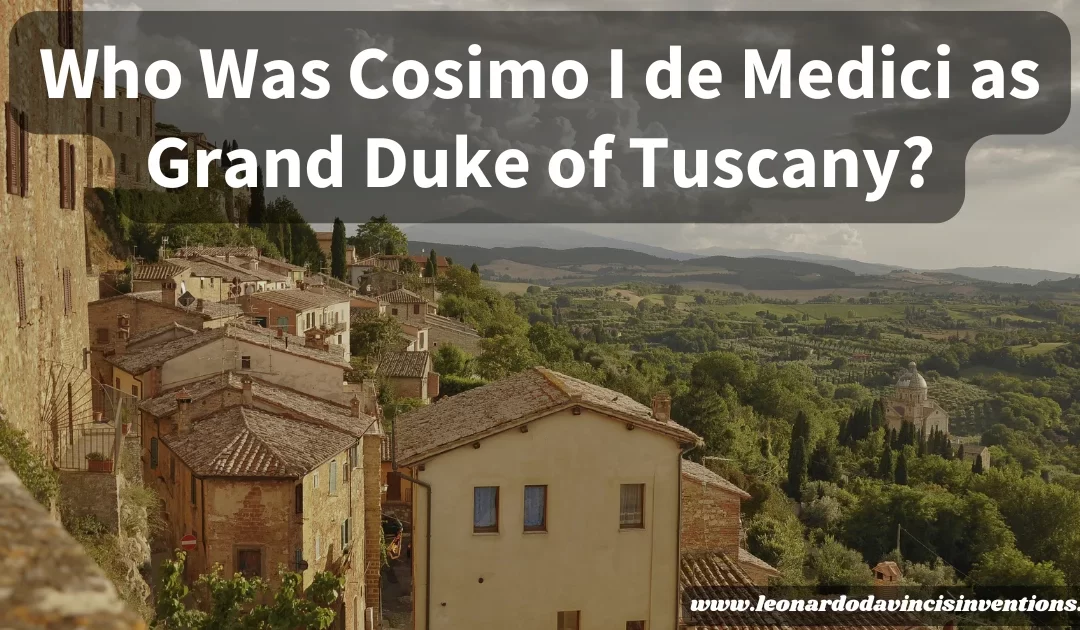
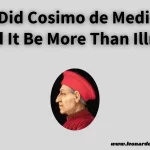

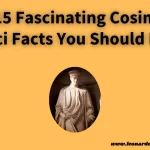

 Leonardo Bianchi,
the creator of Leonardo da Vinci's Inventions.
Thank you for visiting
Leonardo Bianchi,
the creator of Leonardo da Vinci's Inventions.
Thank you for visiting